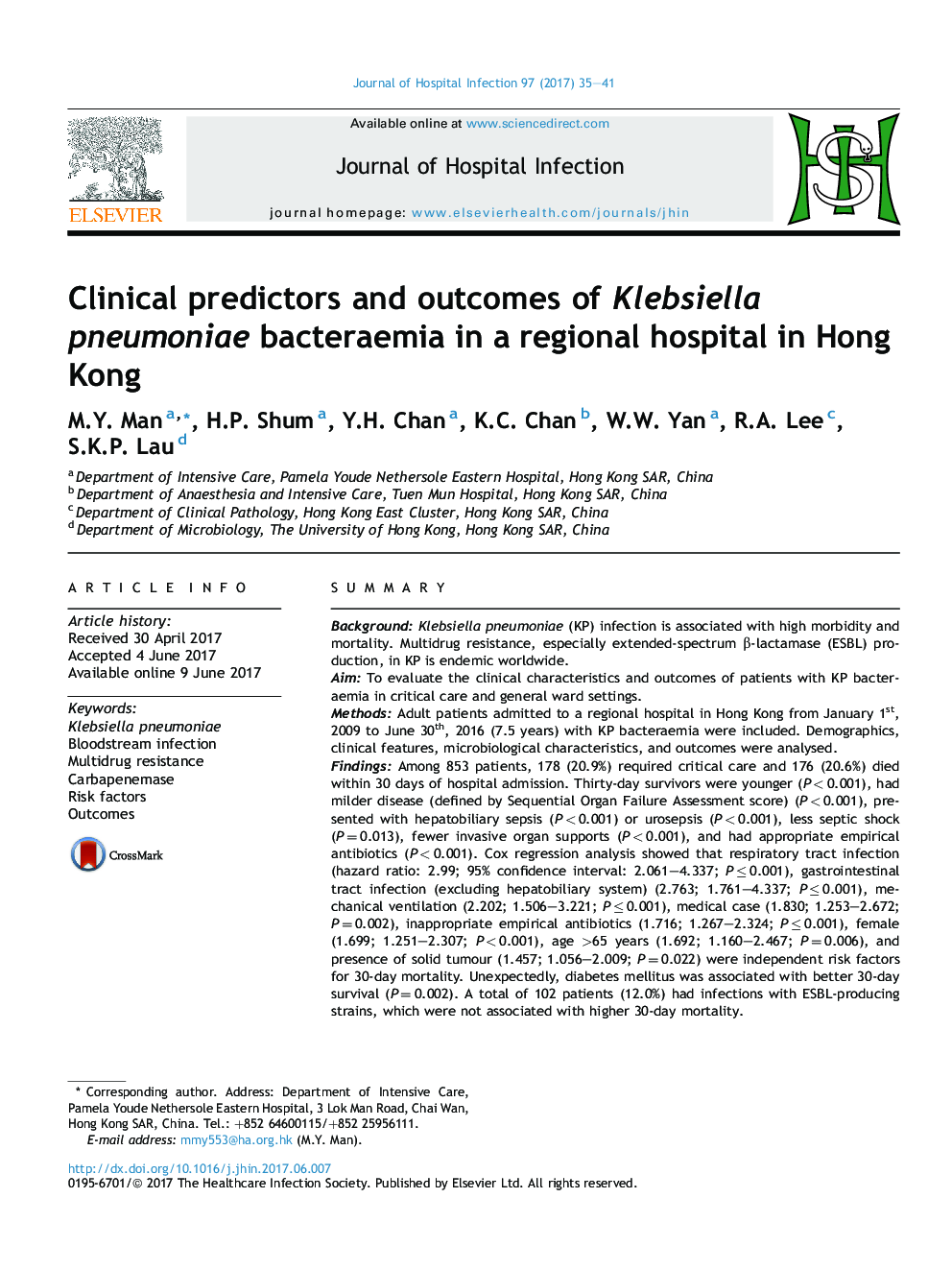| Article ID | Journal | Published Year | Pages | File Type |
|---|---|---|---|---|
| 5668368 | Journal of Hospital Infection | 2017 | 7 Pages |
SummaryBackgroundKlebsiella pneumoniae (KP) infection is associated with high morbidity and mortality. Multidrug resistance, especially extended-spectrum β-lactamase (ESBL) production, in KP is endemic worldwide.AimTo evaluate the clinical characteristics and outcomes of patients with KP bacteraemia in critical care and general ward settings.MethodsAdult patients admitted to a regional hospital in Hong Kong from January 1st, 2009 to June 30th, 2016 (7.5 years) with KP bacteraemia were included. Demographics, clinical features, microbiological characteristics, and outcomes were analysed.FindingsAmong 853 patients, 178 (20.9%) required critical care and 176 (20.6%) died within 30 days of hospital admission. Thirty-day survivors were younger (P < 0.001), had milder disease (defined by Sequential Organ Failure Assessment score) (P < 0.001), presented with hepatobiliary sepsis (P < 0.001) or urosepsis (P < 0.001), less septic shock (P = 0.013), fewer invasive organ supports (P < 0.001), and had appropriate empirical antibiotics (P < 0.001). Cox regression analysis showed that respiratory tract infection (hazard ratio: 2.99; 95% confidence interval: 2.061-4.337; P â¤Â 0.001), gastrointestinal tract infection (excluding hepatobiliary system) (2.763; 1.761-4.337; P â¤Â 0.001), mechanical ventilation (2.202; 1.506-3.221; P â¤Â 0.001), medical case (1.830; 1.253-2.672; P = 0.002), inappropriate empirical antibiotics (1.716; 1.267-2.324; P â¤Â 0.001), female (1.699; 1.251-2.307; P < 0.001), age >65 years (1.692; 1.160-2.467; P = 0.006), and presence of solid tumour (1.457; 1.056-2.009; P = 0.022) were independent risk factors for 30-day mortality. Unexpectedly, diabetes mellitus was associated with better 30-day survival (P = 0.002). A total of 102 patients (12.0%) had infections with ESBL-producing strains, which were not associated with higher 30-day mortality.ConclusionKP bacteraemia is associated with high 30-day mortality. Site of infection, patients' comorbidities and appropriate use of empirical antibiotic are important predictors of patients' outcomes.
